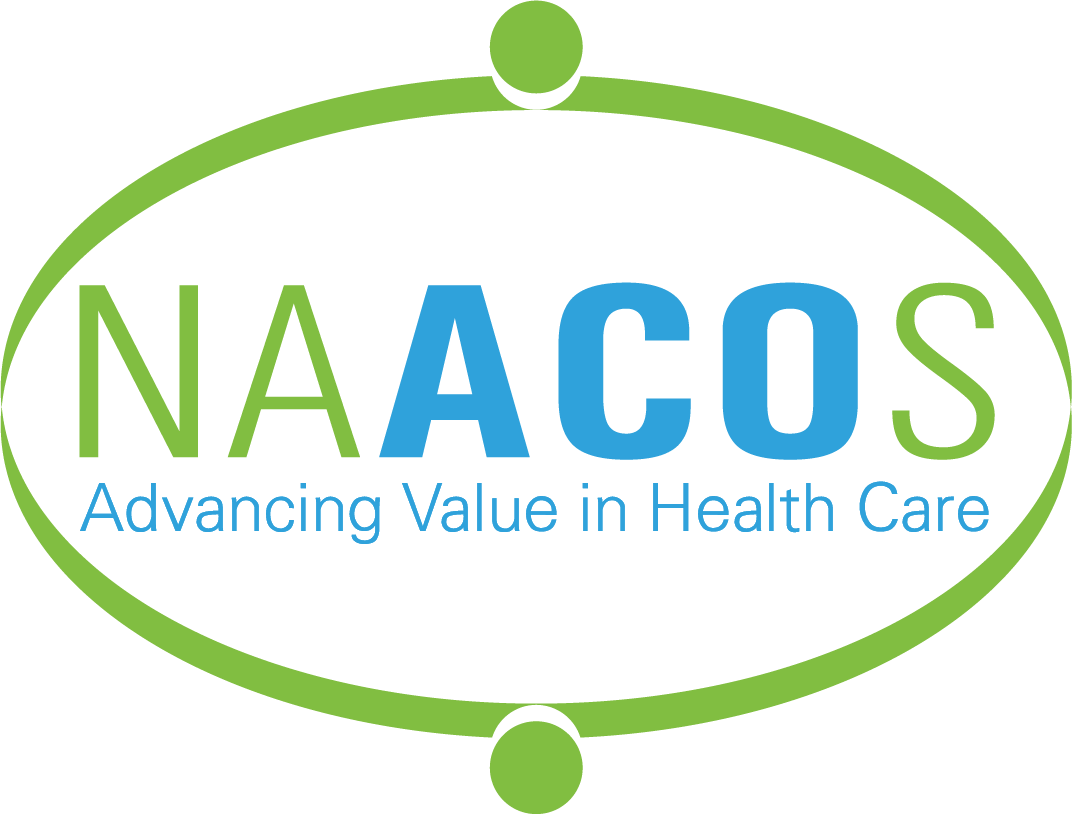NAACOS Newsletter for Members and Partners June 18, 2020
| DIRECT CONTRACTING APPLICATIONS, LOIs NOW BEING ACCEPTED The CMS Innovation Center announced that those interested in applying to participate in the Direct Contracting Model have another chance to submit a Letter of Intent (LOI) if they haven’t done so already. Submit your LOI. Only organizations who submitted a LOI are eligible to apply. Applications to participate in Performance Year 1 of Direct Contracting are due at midnight ET on July 6. That performance period will start on April 1, 2021. CMS has announced that it’ll offer a second application cycle to start on January 2022, which NAACOS had advocated for. An LOI won’t be required to apply for that performance period. That application cycle should take place early next year. Direct Contracting Entities accepted for either the Implementation Period or Performance Year 1 may defer their start until 2022. NAACOS understands that organizations who applied for Direct Contracting’s Implementation Period have received their notifications. They have until July 24 to select their start date, which can be either October 2020, April 2021, or January 2022. The first performance period will run from April 2021 through December 31, 2021. Through its Direct Contracting Task Force, NAACOS had worked with CMS on the model’s development. We will continue to work with CMS to shape the model to be more appealing and beneficial to ACOs and healthcare providers. Our dedicated Direct Contracting page has more information and member resources, including an in-depth analysis and charts comparing Direct Contracting to other Innovation Center models and high-risk ACOs. At the NAACOS Virtual Conference last week, we hosted a session on Direct Contracting and recently announced changes. TELL CMS TO MAKE 2020 QUALITY MEASURES PAY-FOR-REPORTING NAACOS is urging CMS to make all ACO quality measures pay-for-reporting for MSSP and Next Gen ACOs in 2020 as the COVID-19 public health emergency has resulted in unprecedented challenges to providing preventive care and chronic care management. Recent Interim Final Rules with Comment Period (IFCs) initiated the MSSP extreme and uncontrollable circumstances policy for 2020. The MSSP extreme and uncontrollable circumstances policy will adjust an ACO’s quality score to give the higher of the ACO’s quality score or the mean score for the performance year. Given the unique challenges presented by COVID-19, this policy will not go far enough. Contact CMS and submit comments in response to the IFCs urging CMS to instead make all quality measures pay-for-reporting in 2020. Other comments NAACOS has emphasized include allowing a 2021 application cycle for new ACOs and delaying the deadlines for ACOs to leave the program and avoid financial losses in the wake of COVID-19. Take action and reach out to CMS today! CONGRESS PREPARES FOR BUSY SUMMER In the coming weeks, lawmakers will be negotiating another COVID-19 package that could be voted on in late July. In addition, Members from both chambers are working on police reform legislative proposals. Congress also continues to work remotely, working on healthcare appropriations and Medicare and Medicaid extenders. Work on surprise billing and prescription drug legislation has been slowed due to the response to COVID-19, but lawmakers are still looking at options to address these priorities before the end of the year. The focus on 2020 elections will also ramp up in the coming months, which will impact legislative dynamics on Capitol Hill and set the agenda for an end-of-year lame duck session. WEEKLY POLL SHOWS ACO IN-PERSON VISITS INCREASING For the past six weeks, NAACOS has been running a survey to determine what ACOs are seeing now that the country is beginning to reopen. Specifically, we are doing this through one weekly question on the number of in-person office visits relative to what each ACO would have expected under pre-quarantine conditions. We have also asked an additional question(s) some weeks, including inquiring about telehealth visits, how ACOs have supported patients and providers, and, most recently, whether two-sided ACOs have opted to remain in the MSSP program for 2020. We ask that you please continue to respond (or begin responding) to this poll so that we may have the most accurate depiction possible of the current state of ACO office visits. Please note that we are only collecting responses from a single contact at each ACO, so if you do not receive our survey, it is likely somebody else within your organization does. During the week of June 1, 139 ACOs reported on changes in their in-person office visit volume compared with pre-COVID volume levels. This week’s report shows continued improvement in visit volume. In particular, the proportion of respondents with in-person visits down by more than 60 percent fell again from 9 percent last week to 3 percent this week, while the portion of ACOs seeing declines of 0 to 20 percent grew from 13 percent last week to 24 percent this week. The declines remained highest in the Northeast, although for the first time more than half of the ACOs in that region saw in-person visit declines of 40 percent or less. Declines reported by hospital-led and physician-led ACOs were virtually identical. This week, we also asked several ACOs with two-sided risk models if they submitted a termination notice to the Medicare Shared Savings Program by the June 1 deadline. Of 28 respondents, none had. Seventy-nine percent stated they plan to stay in for the full year, with just 18 percent saying they intend to evaluate leaving sometime later this year. Details are provided in the charts. Again, if you are the contact within your ACO, your participation in this weekly survey is greatly appreciated. NAACOS PROUD MEMBER AND PARTNER LOGOS FOR YOUR WEBSITE! Hey NAACOS Members and Partners! Now you can proudly display your NAACOS membership with our new logos. Our recognition as the “Voice of ACOs” with CMS, on Capitol Hill, and in the White House is no accident. Our collective membership voice has helped pave the way to creating an epicenter for value-based care with best learning and sharing practices. To add NAACOS Proud Member/Partner Logo to your website, use one of these logos:
 CMS BEGINS ACCEPTING CHANGE REQUESTS FOR 2021 MSSP ACOs can start submitting change requests to CMS for Performance Year (PY) 2021 beginning this week. These requests include extending an agreement period set to expire at the end of this year for another year, electing to maintain your current participation level in 2021 if you were scheduled to move up on the Basic Track’s glide path, and modifying ACO Participant and/or Skilled Nursing Facility (SNF) Affiliate Lists. Other annual elections include making changes to assignment methodology, selecting the minimum savings rate (MSR)/minimum loss rate (MLR), and applying for a SNF 3-Day Rule Waiver. While NAACOS continues to urge CMS to allow some application cycle to start in 2021, CMS has said the agency is foregoing the annual application cycle, which was supposed to start later this year. The final opportunity for ACOs to submit new change requests is during the RFI-2 response period, which ends at noon ET on September 22. More information is on this CMS page. INNOVATION CENTER MAKES UPDATES AMID COVID-19 The CMS Innovation Center recently announced that it plans to solicit a second round of applications to begin participation in Primary Care First in 2022 for practices currently participating in Comprehensive Primary Care Plus (CPC+). The Innovation Center had previously announced updates to its most popular models. Participants of the Bundled Payments for Care Improvement Advanced Model that choose to remain in two-sided risk will have COVID-related episodes removed from reconciliation. Comprehensive Care for Joint Replacement (CJR), Kidney Care Choices, and Comprehensive End Stage Renal Disease (ESRD) Care Model will each be extended by three months to end in March 2021. This chart outlines the various changes that were announced. MEDPAC RELEASES JUNE REPORT TO CONGRESS The Medicare Payment Advisory Commission (MedPAC) released its annual report to Congress, which asserted that the development of alternative payment models and care delivery models needs to accelerate. In a chapter devoted to value-based payment in Medicare, the Commission called for the encouragement of “accountable entities” to accept responsibility for the cost and quality of patients. MedPAC also discusses having ACOs take on responsibility for prescription drug spending and improving the incentives to engage with beneficiaries. MedPAC said the expanded use of other payment models, such as bundled payments for episodes of care, needs to be well integrated with ACOs. NAACOS wholeheartedly agrees that we need to accelerate the transition to value. NAACOS has long called for a better policy to handle the overlap of various payment models, and we aim to work with ACOs and policymakers to discuss ways to integrate Part D spending into ACOs, beginning with an optional program to test this. In a separate chapter, MedPAC recommended that ACO assignment and benchmarks be based on national provider identifiers (NPI), rather than taxpayer identification number (TIN). MedPAC said this change would reduce the potential for fraud and abuse and provide a more accurate representation of patient populations and ACO providers. NAACOS supports basing assignment on a TIN-NPI combination, rather than full TIN-based assignment. We are working to summarize the MedPAC report for members. NEW GUIDANCE TO HEALTH SYSTEMS AND PATIENTS IN-PERSON CARE The Administration recently issued a guidance document to assist health systems and patients as they begin providing more in-person care. The guidance discusses the importance of not postponing necessary care such as seeking medical attention for chest pains or other signs and symptoms of potentially serious health conditions. Additionally, the guidance discusses when to seek telehealth care to reduce risk of transmission of COVID-19, among others. Guidance is available. MSSP 2020 FINANCIAL HISTORICAL BENCHMARK AND Q1 DATA Today CMS is scheduled to make available the final PY 2020 Historical Benchmark Report packages for MSSP ACOs with agreement periods beginning January 1, 2020. The packages include an ACO’s PY 2020 Final Historical Benchmark Report along with informational files for each of the ACO’s three benchmark years: Annual Assignment List Report, Annual Assignment Summary Report, Annual Aggregate Expenditure/Utilization Report, and Annual Non-Claims-Based Payment File. This historical benchmark report package is based on the PY 2020 ACO Participant List that an ACO certified and the assignment methodology the ACO selected for PY 2020. The benchmarking process used for these files is summarized in this NAACOS analysis of the final Pathways to Success regulation and is shown in detailed regulations available at 42 CFR § 425.601. ACOs also now have access to their PY 2020 Quarter 1 (Q1) Expenditure Utilization (EXPU) and Assignment Summary Report (ASR) data within the Enhanced Reports section of the SSP ACO Portal. This release adds the Q1 report data for PY 2020 to three enhanced reports in the SSP ACO Portal: Assignment Summary Report, Trends for Tables 2-4 and 2-5; Expenditure/Utilization Report, All ACO Distributions Graphs; Expenditure/Utilization Report, Trends, Graphs, and Drill Down for Table 1. |

